
At 12:45 PM on the 6th we entered Florida, which is defined as crossing the middle of the St. Mary's River and the Cumberland Sound. At the south side of Cumberland Sound (another entrance to the Atlantic) is Fort Clinch, occupied by various troops since 1736. The fort still stands and was built in 1847 and restored by the Civil Conservation Corps (CCC) in the 1930s. It was the base of Union forces from early 1862 during the Civil War.

Fernandina Beach is just two miles south of Fort Clinch. Fernandina Beach has a large port and odorific paper mills. Can you see an entire large semi-truck in this photo? Hint: it is at a nearly 45° angle!

Our first night in Florida was spent at anchor in the Fort George River. When we find a meal we like, we stick with it! So, dinner was the last of the New York steaks, yellow squash, and pasta with meat sauce. Yum!
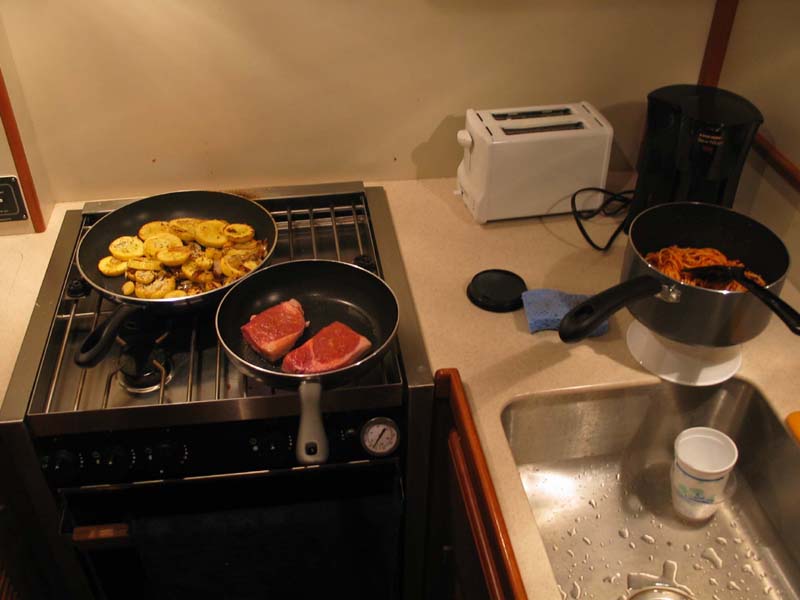
Sunrise was delightful, as usual.
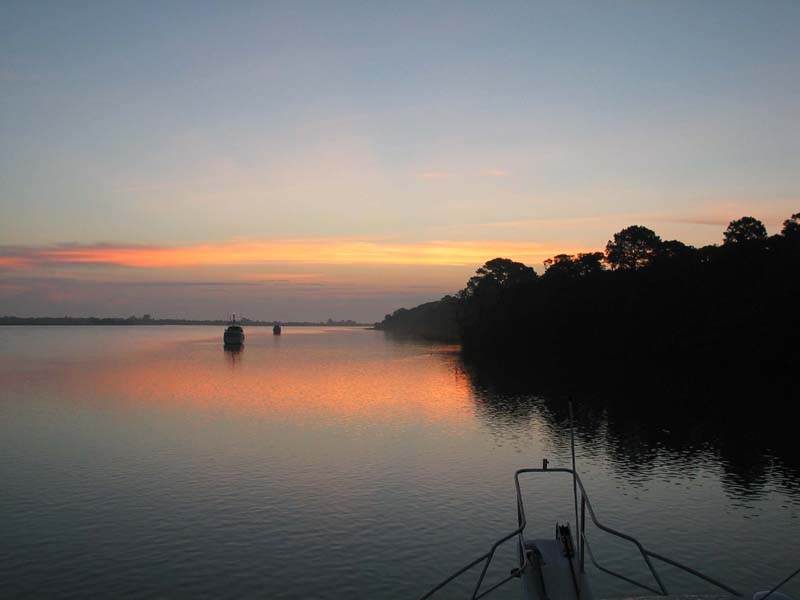
When you have such quiet scenes, one has a chance to reflect on life in a way that never happens in the city.
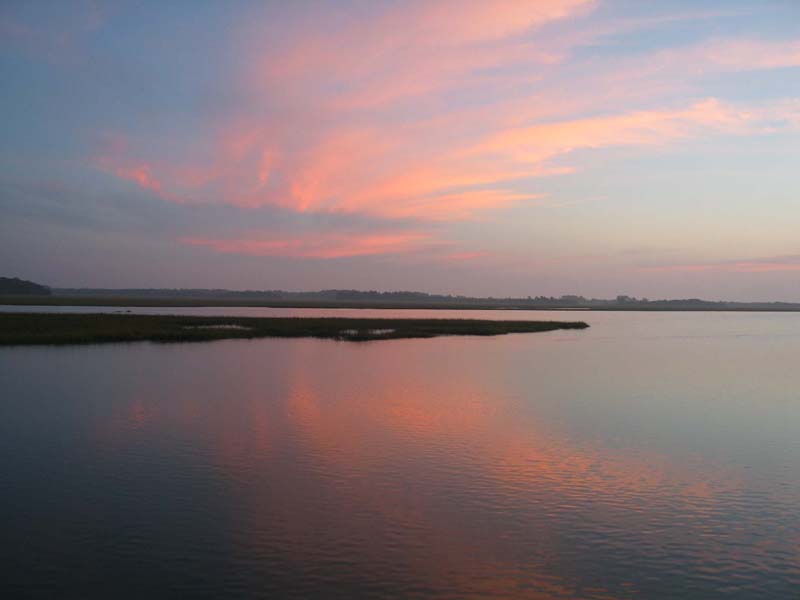
A hearty breakfast helps one get going as well. Here you see (from left to right) my logbook, Garmin GPSmap76, Apple PowerBook G4, and iPod. Not seen are a Canon PowerShot G3 digital camera and a Motorola V120e cell phone. Business idea: combine devices!

Ponte Vedra Beach has gorgeous homes, villas actually, each with their own dock. They are in various canals, like Venice. Miami and Fort Lauderdale have these for $4 million apiece, but in Palm Valley and Ponte Vedra Beach in northern Florida you can have a nice place like this for under $1 million.
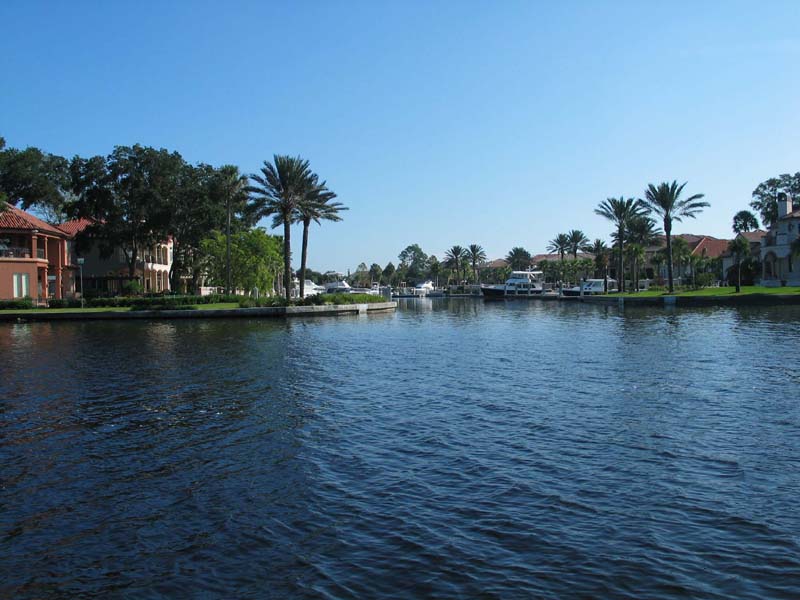
These homes had lots of nice palm trees. Across the canal from these homes was nothing but trees and swamps. This is about 25 miles north of St. Augustine, FL in the Palm Valley area.
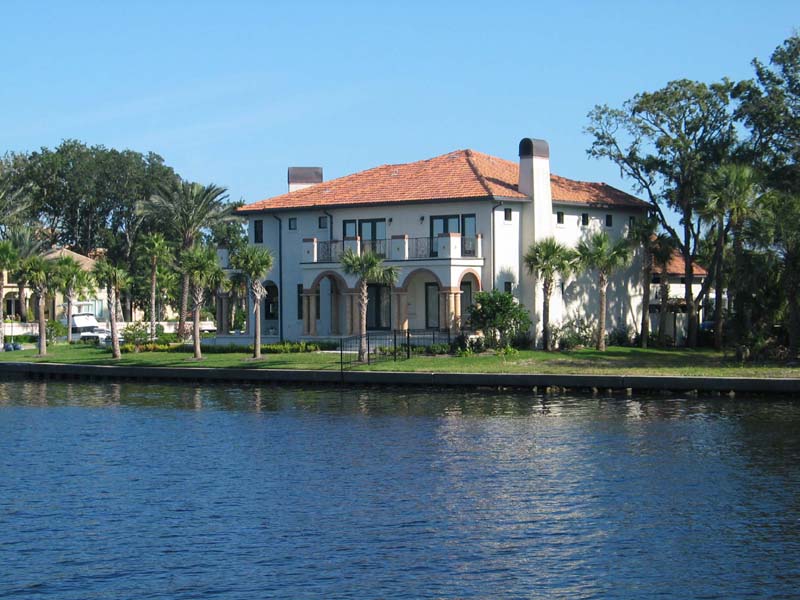
Just before 1 PM we got to the St. Augustine area, with more charming waterfront homes.

As we near the St. Augustine marina and the end of our day, we see the famous Castillo de San Marcos fort built over 300 years ago. This part of Florida is interesting because the French, the Spanish, and the English have all had a big historical influence.
Historical Note: St. Augustine is the oldest city in the United States, being continuously occupied for 438 years. Juan Ponce de Leon landed here first in 1513. In 1564 the French set up a fort and colony on the St. Johns River, which is 38 miles north of St. Augustine. Spain wanted France out, so they sent Don Pedro Menendez de Aviles to go and get rid of the French, which he did. He arrived on August 28th, 1565. Menendez settled here and named it Saint Augustine. In 1586 Sir Francis Drake burned and sacked the town. In 1672 this fort was begun by Spain to protect St. Augustine. It took 23 years to build and is called Castillo de San Marcos. In 1763 Spain ceded Florida to England. In 1783 under the Treaty of Paris Florida was given back to Spain for 37 years. In 1821 the US bought Florida from Spain. Whew!

This is the Bridge of Lions which leads from downtown St. Augustine east to Anastasia Island, a suburb of the town. Here we are looking due west at the downtown where Flagler College is: it is the left two towers.
Historical Note: Henry Morrison Flagler almost singlehandedly developed Florida. Born in 1830 in New York, he formed a partnership with John D. Rockefeller in 1870 which resulted in a company known as Standard Oil. In 1883 he decided to move to St. Augustine for health reasons, and there he saw the need for better infrastructure, so in 1887 he built the Hotel Ponce de Leon (which became Flagler College!), in 1888 he built the Hotel Alcazar across from the Ponce de Leon (now the Lightner Museum), and bought the Hotel Casa Monica (recently rennovated and where we had a very nice dinner), and turned St. Augustine into a "Southern Newport". The reason he did is credited with developing Florida is that he built the Florida East Coast Railway which by 1905 extended to Key West. This railroad allowed tourism and fruit exports to put Florida on the map. Flagler died in 1913 and is buried in St. Augustine.
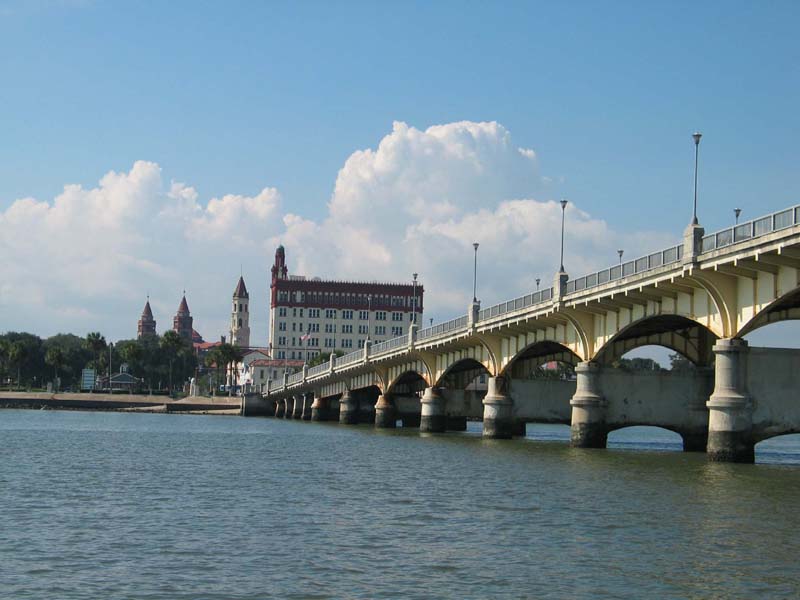
On 143 Saint George Street in downtown St. Augustine is the Pena-Peck House, built in 1740. This was the original site for the Royal Spanish Treasurer, and the home of the British Lt. Governor of Florida. On a side entrance to the building is the interesting vertical sun dial, which faces south and has the Latin motto "Pereunt et Imputantur", which translated means "They [the hours] pass and are placed to our account".
Navigation Note: The latitude and longitude for this wall are actually 29°53'32"N, 81°18'35"W, excellent for several hundred years ago with no GPS or computers. The latitude is off by only 1300 feet...

After a great afternoon in St. Augustine, I did my laundry back at the marina. Then Erich and I had a nice dinner at the Hotel Casa Monica and back to the boat, where we heard a strange scratching sound on the hull of the boat while at rest in the marina, either krill, shrimp, or schools of herring I am told.
Last updated: 2003.11.21.